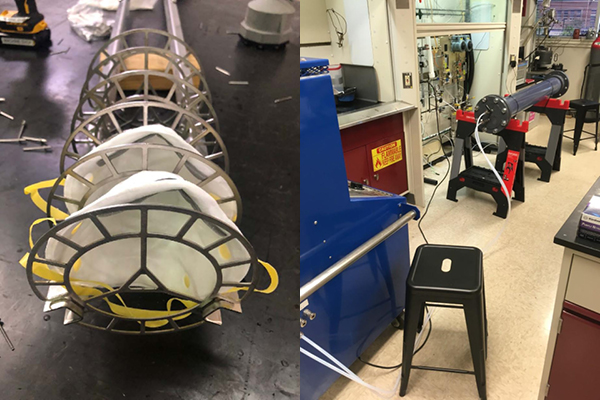Researchers at the University of Louisiana at Lafayette are working on a system that relies on ozone to decontaminate masks worn by health care personnel to protect them from airborne pathogens.
The tight-fitting masks are a type of personal protective equipment, or PPE. They are designed to be worn only once by medical professionals assisting patients with highly infectious diseases, such as coronavirus.
Dr. Mark Zappi, director of the Energy Institute of Louisiana at UL Lafayette, is leading a team of faculty and student researchers to develop a process for disinfecting the masks.
During the COVID-19 outbreak, supply chain shortages have required health care personnel in some of the hardest hit regions of the country to wear masks multiple times. Some medical professionals have resorted to creating homemade masks from fabric or cardboard.
That’s left scientists, including researchers at the University, working long hours to devise ways for decontaminating masks so they can be reworn.
The method being researched by Zappi’s team involves placing masks in a tubular reactor – a sealed pipelike chamber made of transparent PVC plastic. The prototype reactor is about 5 feet long, with a 6-inch internal diameter. “It’s designed to minimize waste by enveloping the mask in ozone. The design also ensures thorough cleansing,” he said.
Masks are placed on a metal rack that slides into the reactor. An ozone generator transfers the gas into the chamber via a length of Teflon tubing for about 10 minutes of exposure.
“The ozonated gas then goes into a ‘destruct system’ which breaks it down so it isn’t released into the air. And then, the reactor is purged with breathing air to rid the masks of ozone before it’s opened,” Zappi explained.
The system can be designed to treat more than 50,000 masks a day. The University has applied for a patent for the concept.
“The process has generated significant interest, including from hospital groups and the U.S. Department of Defense. Plans are to partner with a funding agency with interest in regulatory certification and commercial use,” Zappi said.
Several other methods for decontaminating masks worn by health care personnel are being widely implemented or tested. Treating masks with vaporized hydrogen peroxide and ultraviolet radiation are two of them.
Ozone shows promise, however, because it is more comprehensive than UV radiation, which involves directing single rays onto various places on a mask, which can cause spotty results. Hydrogen peroxide isn’t as strong or effective a disinfectant as ozone.
“Ozone is the most powerful oxidizer for viruses. It commonly used to disinfect vegetables, fruits, meat and water. But, as of now, it’s an unproven technology in the eyes of the Centers for Disease Control,” Zappi said.
Continued trials and testing effectiveness is the next step in UL Lafayette researchers’ efforts to change that. A big component of that will involve a balancing act, determining the right amount of ozone necessary to decontaminate masks while ensuring the amount isn’t so high it harms the integrity of the masks.
“The more ozone used for disinfectant purposes, for example, the more potential for degrading the elastic that holds them to a wearer’s head wearer’s head,” Zappi said.
Photo caption: Researchers at the University of Louisiana at Lafayette are testing a system that relies on ozone being pumped into a tubular reactor to decontaminate masks worn by health care personnel to protect them from airborne pathogens (shown at right). The masks are placed on a metal rack that slides into the reactor. Once inside the reactor, they are exposed to ozone for about 10 minutes (shown at left). Photo credit: University of Louisiana at Lafayette
